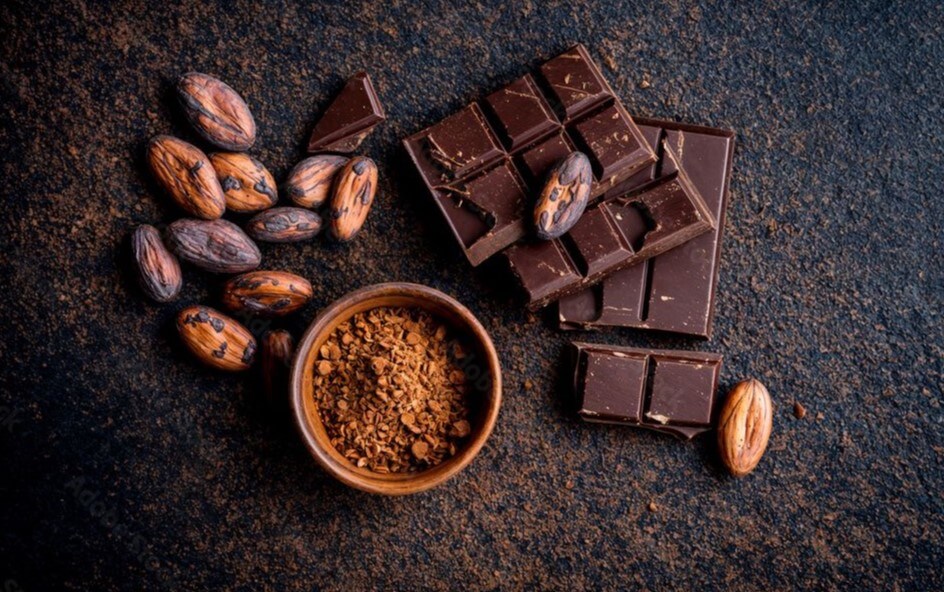Bean to Bar chocolate is more than a sweet treat — it is a complete journey from cacao bean to finished bar, crafted with transparency, patience, and deep respect for ingredients. As this movement grows rapidly in Vietnam, more consumers are beginning to appreciate chocolate not only as food, but as an expression of culture, craftsmanship, and origin.
In this guide, you will discover what Bean to Bar chocolate truly means, how it is made, why it is becoming a global trend, and how to enjoy it with all its natural flavors.
What Is Pure Bean to Bar Chocolate?
“Bean to Bar chocolate” refers to chocolate that is produced by controlling every step of the process — from selecting cacao beans, roasting, grinding, conching, tempering, all the way to molding and packaging.
Unlike mass-produced industrial chocolate, Bean to Bar chocolate is:
-
Transparent about origin
-
Made in small batches
-
Crafted with minimal ingredients
-
Focused on natural cacao flavor
Each bar tells the story of the land, the farmers, and the artisan who shaped it. It is not just a product — it is a narrative in edible form.

Why Bean to Bar Chocolate Is Rising in Popularity
1. Transparency in Origin
Consumers are increasingly interested in where cacao comes from:
How it was grown, fermented, dried, and transported. Bean to Bar chocolate offers full traceability, giving clarity and trust throughout the process.
2. Naturally Rich and Diverse Flavors
Cacao from every region has a unique flavor “personality”:
-
Bến Tre cacao – bright acidity and fruity notes
-
Đắk Lắk cacao – warm caramel and roasted nut profiles
Because no artificial flavors are added, Bean to Bar chocolate showcases pure cacao identity, something industrial chocolate rarely achieves.
3. Appreciation for Handcrafted Quality
Every bar is carefully crafted in small batches, often by artisans with deep passion for cacao.
The textures are smoother, the flavors more complex, and the storytelling richer.
4. Sustainability and Fairness
The Bean to Bar model supports:
-
Fairer income for cacao farmers
-
Preservation of local cacao varieties
-
Environmentally friendly farming and production
This makes it a meaningful choice for modern consumers.
The Bean to Bar Chocolate Process: From Cacao Bean to Finished Bar
1. Harvesting and Fermentation
Cacao pods are hand-harvested and the beans inside are fermented — a crucial step that shapes the chocolate’s base flavor. Proper fermentation creates depth, aroma, and complexity.
2. Drying and Sorting
After fermentation, beans are sun-dried, then sorted to remove defects. Only high-quality beans continue to the next stage.
3. Roasting
Roasting enhances natural flavors, reduces bitterness, and develops aroma. The temperature and time vary depending on the cacao variety and flavor goals.
4. Cracking and Winnowing
The roasted beans are cracked to separate the nibs from the shells. The nibs — pure cacao — move on to the grinding stage.
5. Grinding and Refining
Nibs are ground into cacao liquor, then refined until perfectly smooth. This step determines the mouthfeel and texture of the final chocolate.
6. Conching
The chocolate is mixed and aerated for hours to enhance flavor, reduce acidity, and achieve balance.
This is where chocolate becomes silky and aromatic.
7. Tempering
Through controlled heating and cooling, chocolate forms stable crystals — giving it a glossy finish, clean snap, and smooth melt in the mouth.
8. Molding and Packaging
The tempered chocolate is poured into molds, cooled, removed, and wrapped with care.
Each bar is now ready to be enjoyed — rich, authentic, and full of character.
Pure vs. Industrial Chocolate: What Makes Them Different?
Bean to Bar Chocolate
-
Small-batch
-
Transparent origin
-
Minimal ingredients
-
Distinct flavor per origin
-
Strong artisan identity
-
Supports local farmers
Industrial Chocolate
-
Mass-produced
-
Less transparent sourcing
-
Uses flavorings and stabilizers
-
Consistent but generic flavor
-
Focused on volume, not craftsmanship
Bean to Bar chocolate offers a deeper, richer story — one that you can taste.
The Value Bean to Bar Chocolate Brings
For Farmers
-
Fairer compensation
-
Stable market demand
-
Motivation to preserve high-quality cacao genetics
For Consumers
-
A healthier, more natural treat
-
Complex flavors shaped by origin
-
Confidence in ingredient quality
For the Environment
-
Sustainable farming practices
-
Reduced waste
-
Preservation of biodiversity

Bean to Bar Chocolate in Vietnam
Vietnam is emerging as a new cacao destination in Asia. Regions like Bến Tre, Đắk Lắk, and Tiền Giang produce cacao with excellent flavor complexity.
Vietnamese Bean to Bar brands have also won international awards, elevating the reputation of Vietnamese cacao worldwide.
Workshops and chocolate-making experiences are becoming more popular, allowing families, children, and tourists to:
-
Visit cacao farms
-
Learn the crafting process
-
Create their own chocolate bars
-
Understand the cultural value behind cacao
This is both educational and inspiring.
How to Enjoy Bean to Bar Chocolate Properly
To fully appreciate the flavor:
-
Choose bars with clear cacao percentage and origin.
-
Place a piece on your tongue and let it melt slowly — don’t chew.
-
Notice the flavors evolving: fruity, nutty, floral, caramel, or earthy notes.
-
Pair with coffee, tea, whisky, or wine for a richer experience.
Bean to Bar chocolate is not just eaten — it is experienced.
A New Standard for Chocolate Lovers
Bean to Bar is not a passing trend.
It is the new benchmark for what chocolate should be:
-
Pure
-
Transparent
-
Ethical
-
Artisanal
-
Rich with story
When you hold a bar of Bean to Bar chocolate, you are holding an entire journey — from cacao tree to artisan workshop to your hands.
If you want to explore this world firsthand, follow local chocolate makers or visit crafting workshops in Vietnam. It is a beautiful way to support sustainable production and discover the true heart of chocolate.

